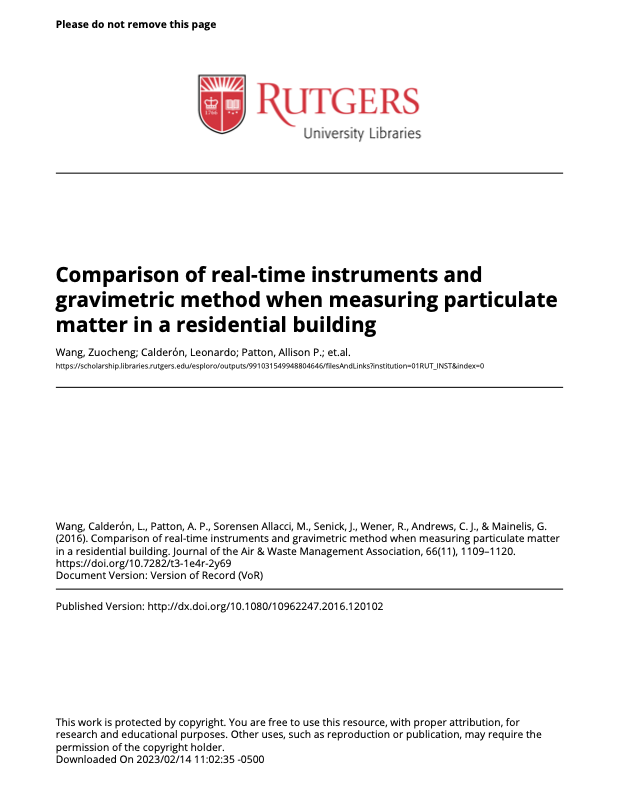This study used several real-time and filter-based aerosol instruments to measure PM2.5 levels in a high-rise residential green building in the Northeastern US and compared performance of those instruments. PM2.5 24-hr average concentrations were determined using a Personal Modular Impactor (PMI) with 2.5 μm cut (SKC Inc., Eighty Four, PA) and a direct reading pDR-1500 (Thermo Scientific, Franklin, MA) as well as its filter. 1-hr average PM2.5 concentrations were measured in the same apartments with an Aerotrak Optical Particle Counter (OPC) (model 8220, TSI, Inc., Shoreview, MN) and a DustTrak DRX mass monitor (model 8534, TSI, Inc., Shoreview, MN). OPC and DRX measurements were compared with concurrent 1-hr mass concentration from the pDR-1500. The pDR-1500 direct reading showed approximately 40% higher particle mass con- centration compared to its own filter (n = 41), and 25% higher PM2.5 mass concentration compared to the PMI2.5 filter. The pDR-1500 direct reading and PMI2.5 in non-smoking homes (self-reported) were not significantly different (n = 10, R2 = 0.937), while the difference between measurements for smoking homes was 44% (n = 31, R2 = 0.773). Both OPC and DRX data had substantial and significant systematic and proportional biases compared with pDR-1500 readings. However, these methods were highly correlated: R2 = 0.936 for OPC versus pDR-1500 reading and R2 = 0.863 for DRX versus pDR-1500 reading. The data suggest that accuracy of aerosol mass concentrations from direct-reading instruments in indoor environments depends on the instru- ment, and that correction factors can be used to reduce biases of these real-time monitors in residential green buildings with similar aerosol properties.
Comparison of real-time instruments and gravimetric method when measuring particulate matter in a residential building
Citation:
(2016) Comparison of real-time instruments and gravimetric method when measuring particulate matter in a residential building, Journal of the Air & Waste Management Association, 66:11, 1109-1120, https://doi.org/doi:10.7282/t3-1e4r-2y69
